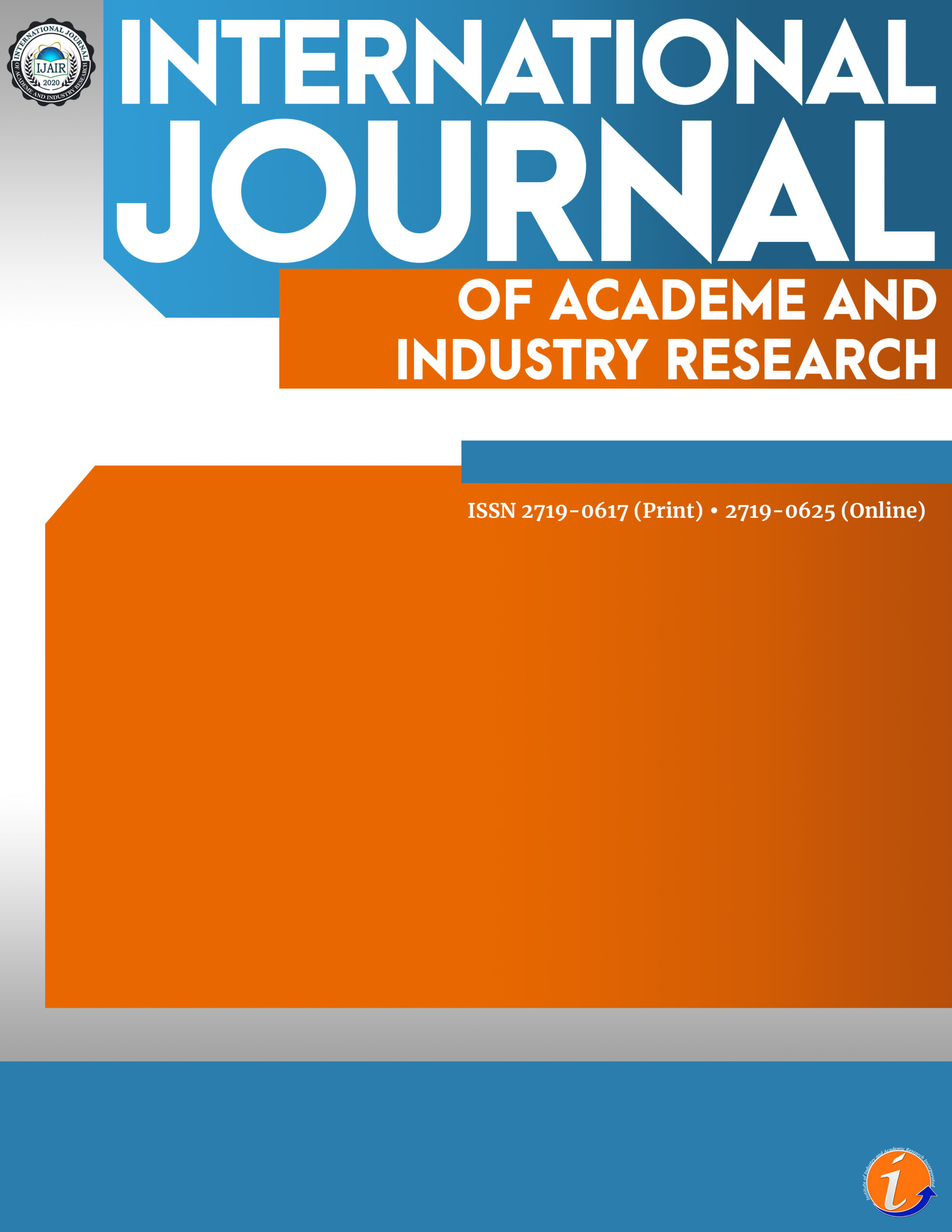Transitioning from one generation of leaders to another for organizational effectiveness has been discussed among academics and professionals. Obtaining empirical evidence on managerial and leadership approaches of managers in the 21st century has been considered necessary, especially in the digital era. This paper investigates the managerial approaches and establishes factors that enhance the performance of millennial managers. Descriptive and inferential statistics were employed, leveraging primary data from a survey questionnaire designed to elicit information from a cross-section of 235 millennial managers across different sectors in Nigeria. Structural equation modeling (SEM) was employed to measure the constructs around the subject matter using Smart PLS. Findings revealed that technological advancement and cooperation from organizational members are essential factors supporting the productive performance of millennial managers. Results further showed that millennial management is a transformational leadership style. There is a need to design a blueprint at the organizational level to motivate and develop the appropriate leadership culture among millennial managers to drive the 21st-century organization for better performance.
millennial managers, transformational leadership, organizational effectiveness, leadership
Oluyemi Theophilus Adeosun. Lagos State Business School, Pan Atlantic University, Nigeria
Waliu Mulero Adegbite. Corresponding author. Department of Industrial Psychology and People Management, College of Business & Economics, University of Johannesburg, South Africa. Email: adegbitewaliu@gmail.com
Temitope J. Owolabi. Department of Sociology, University of Lagos, Nigeria
“All authors equally contributed to the conception, design, preparation, data gathering and analysis, and writing of the manuscript. All authors read and approved the final manuscript.”
No potential conflict of interest was reported by the author(s).
This work was not supported by any funding.
The ethical review and approval were waived for this study.
AI tools were not used in writing this paper.
Ackaradejruangsri, P., Mumi, A., Rattanapituk, S., & Pakhunwanich, P. (2023). Exploring the determinants of young inclusive leadership in Thailand: research taxonomy and theoretical framework. Journal of the Knowledge Economy, 14, 3696–3723. https://doi.org/10.1007/s13132-022-01017-7
Allen, R.S., Allen, D.E., Karl, K. & White, C.S. (2019). Are millennials really an entitled generation? an investigation into generational equity sensitivity differences. https://www.proquest.com/scholarly-journals/are-millennials-really-entitled-generation/docview/1766244151/se-2
Alzoraiki, M., Ahmad, A. R., Ateeq, A. A., Naji, G. M. A., Almaamari, Q., & Beshr, B. A. H. (2023). Impact of teachers’ commitment to the relationship between transformational leadership and sustainable teaching performance. Sustainability, 15(5), 4620. https://doi.org/10.3390/su15054620
Andika, A., Fadri, Z., & Maulana, A. (2022). Internalization of social life for the millennial generation through the Qur’an perspective. INDEV: International Journal of Islamic Community Development, 1(1), 15-28. https://ojs.iainbatusangkar.ac.id/ojs/index.php/indev
Andrea, H. & Molly, E. (2010). Millennials and the world of work: an organization and management perspective, Journal of Business Psychology, 211–223. https://doi.org/10.1007/S10869-010-9160-Y
Anwer, S. A., Mohammad, A. J., Abdulrahman, B. S., Qader, K. S., Jamil, D. A., Gardi, B., & Sabah, K. K. (2022). Leading project teams: The role of leadership styles in dynamic work environment. International Journal of English Literature and Social Sciences (IJELS), 7(6). https://doi.org/10.22161/ijels.76.4
Arghode, V., Lathan, A., Alagaraja, M., Rajaram, K., & McLean, G. N. (2022). Empathic organizational culture and leadership: Conceptualizing the framework. European Journal of Training and Development, 46(1/2), 239-256. http://dx.doi.org/10.1108/EJTD-09-2020-0139
Astuti, T. B., & Rifa’i, M. (2020). Application of total quality management, performance measurement system and effectiveness systems on managerial performance. Jurnal Mantik, 4(1), 739-743. https://iocscience.org/ejournal/index.php/mantik/article/view/847
Avolio, B. J., & Bass, B. M. (2002). Developing potential across a full range of leadership: Cases on transactional and transformational leadership. London: Lawrence Erlbaum Associates. Inc. https://doi.org/10.4324/9781410603975
Bahrami, P., Nosratabadi, S., Palouzian, K., & Hegedűs, S. (2022). Modeling the impact of mentoring on women’s work-life balance: A grounded theory approach. Administrative Sciences, 13(1), 6. https://doi.org/10.3390/admsci13010006
Barkin, S. L, Heerman,W. J, Warren, M. D. & Rennhoff, C. (2010). Millennials and the world of work: The impact of obesity on health and productivity, Journal of Business Psychology, 25(2):239-245. https://doi.org/10.1007/s10869-010-9166-5
Barnard, R., Cosgrove, D., & Welsh, J. (1998). Chips & Pop: Decoding the nexus generation. Toronto: Malcolm Lester Books. https://books.google.com.ng/books/about/Chips_Pop.html?id=55UrAQAAMAAJ&re dir_esc=y
Barnes, E., & Gearin, C. (2022). How millennials approach leadership in higher education. The Journal of Leadership Education, 21(1), Article Number R4. https://doi.org/10.12806/V21/I1/R4
Bence, B. (2022). The importance of leadership agility. Coach me! Your personal board of Directors: Leadership advice from the world’s greatest coaches, Wiley online. https://doi.org/10.1002/9781119823803
Brown, A. W. (2022). New chapters in a timeless story: An autoethnography on the development of an interdisciplinary degree in Human Sciences (Doctoral dissertation). https://ttu-ir.tdl.org/server/api/core/bitstreams/a5915a58-7e57-4564-903d-290baff802f6/content
Burke, R. J., & Ng, E. (2006). The changing nature of work and organizations: implications for human resource management. Human Resource Management Review, 16, 86-94. https://doi.org/10.1016/j.hrmr.2006.03.006
Camp, K. M., Young, M., & Bushardt, S. C. (2022). A millennial manager skills model for the new remote work environment. Management Research Review, 45(5), 635-648. https://doi.org/10.1108/mrr-01-2021-0076
Chan, C. K. Y., & Lee, K. K. (2023). The AI generation gap: Are Gen Z students more interested in adopting generative AI such as ChatGPT in teaching and learning than their Gen X and Millennial Generation teachers? Smart Learning Environment. 10, 60. https://doi.org/10.1186/s40561-023-00269
Chatman, J. A. (1991). Matching people and organizations: selection and socialization in public accounting firms, Administrative Science Quarterly, 36(3), 459-84. https://doi.org/10.5465/AMBPP.1989.4980837
Chillakuri, B., Sai Hitesh, J. V., & Srinivas, K. S. (2022). Getting the next generation ready to take over family business: A generation Z perspective. South Asian Journal of Management, 29(3). https://www.proquest.com/scholarly-journals/getting-next-generation-ready-take-over-family/docview/2727732973/se-2?accountid=13425
Coppens, K. S. K. (2022). A generational study of the value and perceived presence of retention factors for secondary teachers, Doctoral dissertation, Dallas Baptist University. https://www.proquest.com/openview/5494f7c5c8246bcef129d62375d126fb/1?pq- origsite=gscholar%26cbl=18750%26diss=y
Cox, L. (2016). Understanding millennial generation X and baby boomer preferred leadership characteristics: Informing today’s leaders and followers, Doctoral dissertation. https://www.proquest.com/dissertations-theses/understanding-millennial-generation-x-baby-boomer/docview/1793940464/se-2?accountid=13425
De Vos, A., Buyens, D. & Schalk, R. (2003). Psychological contract development during organizational socialization: Adaptation to reality and the role of reciprocity, Journal of Organizational Behavior, 24(5), 537-559. https://doi.org/10.1002/job.205
Deyoe, R. H. & Fox, T. L. (2011). Identifying strategies to minimize workplace conflict due to generational differences. Journal of Behavioral Studies in Business, 41-17. https://doi.org/10.24002/kinerja.v22i2.2127
Dvir, T., Eden, D., Avolio, B. J., & Shamir, B. (2002). Impact of transformational leadership on follower development and performance: A field experiment. Academy of Management Journal, 45(4), 735–744. https://doi.org/10.2307/3069307
Dyer Jr, W. G., & Dyer, J. H. (2019). Beyond team building: How to build high performing teams and the culture to support them. https://www.wiley.com/en- us/Beyond+Team+Building%3A+How+to+Build+High+Performing+Teams+and+th e+Culture+to+Support+Them-p-9781119551386
Easton, C., & Steyn, R. (2023). Millennial leaders and leadership styles displayed in the workplace. South African Journal of Business Management, 54(1), a3139. https://doi.org/10.4102/sajbm.v54i1.3139
Edmunds, J., & Turner, B. S. (2002). Generations, culture, and society. Open University Press. https://books.google.com.ng/books/about/Generations_Culture_and_Society.html?id=effFQgAACAAJ&redir_esc=y
Emylee, A. & Aaron A. B. (2016). Giving negative feedback to millennials: How can managers criticize the most praised generation entitled and more miserable than ever before, Free Press, New York, NY. https://doi.org/10.1108/MRR-05-2015-0118
Erhan, T., Uzunbacak, H. H., & Aydin, E. (2022). From conventional to digital leadership: Exploring digitalization of leadership and innovative work behavior. Management Research Review, 45(11), 1524-1543. https://doi.org/10.1108/MRR-05-2021-0338
Fairhurst, G. T., & Uhl-Bien, M. (2012). Organizational discourse analysis: Examining leadership as a relational process. Leadership Quarterly, 23, 1043-1062. https://doi.org/10.1016/j.leaqua.2012.10.005
Farrukh, M., Ansari, N., Raza, A., Wu, Y., & Wang, H. (2022). Fostering employee’s Pro- environmental behavior through green transformational leadership, green human resource management and environmental knowledge. Technological Forecasting and Social Change, 179, 121643. https://doi.org/10.1016/j.techfore.2022.121643
Fore, C. (2012). Next generation leadership: Millennials as leaders. Capella University. ProQuest Digital Dissertations. https://www.proquest.com/docview/1314807131/?sourcetype=Dissertations%20&%2 0Theses
Gabriel, A. G., Alcantara, G. M., & Alvarez, J. D. (2020). How do millennial managers lead older employees? The Philippine workplace experience. Sage Open, 10(1), 2158244020914651. https://doi.org/10.1177/2158244020914651
Gabrielova, K., & Buchko, A. A. (2021). Here comes generation Z: Millennials as managers. Business Horizons, 64(4), 489-499. https://doi.org/10.1016/j.bushor.2021.02.013
Gazzola, P., Pavione, E., Pezzetti, R., & Grechi, D. (2020). Trends in the fashion industry. The perception of sustainability and circular economy: A gender/generation quantitative approach. Sustainability, 12(7), 2809. https://doi.org/10.3390/su12072809
Gerrit, T., & Kathryn, A. (2010). The employment expectations of different age cohorts: is generation y really that different? https://www.researchgate.net/publication/249334903
Giauque, D. (2016). Stress among public middle managers dealing with reforms, Journal of Health Organization and Management, 30(8), 1259-1283. https://doi.org/10.1108/JHOM-06-2016-0111
Gibson, W. J., Greenwood, R. A., & Murphy, E. F. (2010). Analyzing generational values among managers and non-managers for sustainable organizational effectiveness. SAM Advanced Management Journal, Winter, 33–43. https://nova.elsevierpure.com/en/publications/analyzing-generational-values-among- managers-and-non-managers-for-2
Guha, A. (2010). Motivators and hygiene factors of generation x and generation y-the test of two-factor theory. Vilakshan: The XIMB Journal of Management, 7(2), 121-132.
Guille, C., Fran, E., Zhao, Z., Kalmbach, D. A., Nietert, P. J., Mata, D. & Sen, S. (2017). Work- family conflict and the sex difference in depression among training physicians, JAMA Internal Medicine, 177(12), 1766-1772. https://doi.org/10.1001/jamainternmed.2017.5138.
Gursoy, D., Maier, T. A., & Chi, C. G. (2008). Generational differences: an examination of work values and generational gaps in the hospitality workforce. International Journal of Hospitality Management, 27, 458–488. https://doi.org/10.1016/j.ijhm.2007.11.002
Hafeez, M., & Bidari, S. (2022). How does transformational leadership style affect organizational performance? The case of educational institutions. South Asian Review of Business and Administrative Studies, 4(2), 113–128. https://doi.org/10.52461/sabas.v4i2.1514
Hair, J. F., Ringle, C. M., & Sarstedt, M. (2012). Partial least squares: The better approach to structural equation modelling? Long Range Planning, 45(5–6), 312–319. https://doi.org/10.1016/j.lrp.2012.09.004
Harris, M. (2017). Kids these days: Human capital and the making of millennials. First Edition. New York, NY, Little, Brown and Company.
Hasbullah, N. N., Sulaiman, Z., Mas’ od, A., & Ahmad Sugiran, H. S. (2022). Drivers of sustainable apparel purchase intention: An empirical study of Malaysian millennial consumers. Sustainability, 14(4), 1945. https://doi.org/10.3390/su14041945
Henderikx, M., & Stoffers, J. (2022). An exploratory literature study into digital transformation and leadership: toward future-proof middle managers. Sustainability, 14(2), 687. https://doi.org/10.3390/su14020687
Henkel, T. G., & Haley, G. R. (2020). Analyzing critical factors: Motivating project managers. The Journal of Modern Project Management, 8(2), 108. https://doi.org/10.19255/JMPM02409
Henseler, J., Hubona, G., & Ray, P. A. (2016). Using PLS path modeling in new technology research: Updated guidelines. Industrial Management & Data Systems, 116(1), 2–20. https://doi.org/10.1108/IMDS-09-2015-0382
Hobbs, H. L. (2017). A qualitative study of millennials in the workplace: gaining their long- term employment. News Media Firms in North Alabama. https://www.semanticscholar.org/paper/A-Qualitative-Study-of-Millennials-in-the-Gaining-Hobbs/abcf70983493877453a7fc9dd48cffd94bbf2ed8
Hoque, K. E., & Raya, Z. T. (2023). Relationship between principals’ leadership styles and teachers’ behavior. Behavioral Sciences, 13(2), 111. https://doi.org/10.3390/bs13020111
Howe, N., & Strauss, W. (2000). Millennials rising: The next great generation. Vintage Books. https://doi.org/10.4236/ahs.2015.44023
Hulin, C., Netemeyer, R., & Cudeck, R. (2001). Can a reliability coefficient be too high? Journal of Consumer Psychology, 10(1), 55–58. https://doi.org/10.1207/S15327663JCP1001&2_05
Islam, M. N. (2023). Managing organizational change in responding to global crises. Global Business and Organizational Excellence, 42(3), 42–57. https://doi.org/10.1002/joe.22189
Jasrotia, S. S., Darda, P., & Pandey, S. (2023). Changing values of millennials and centennials towards responsible consumption and sustainable society. Society and Business Review, 18(2), 244–263. https://doi.org/10.1108/SABR-04-2022-0209
Kaifi, B. A., Nafei, W. A., Khanfar, N. M., & Kaifi, M. M. (2012). A multi-generational workforce: managing and understanding millennials. International Journal of Business & Management, 7(24), 88–93. https://doi.org/10.5539/ijbm.v7n24p88
Kaul, A. (2022). Attracting, retaining and motivating the Indian millennials: A human resource perspective. ICTACT Journal on Management Studies, 8(1), 1524–1530. http://doi.org/10.21917/ijms.2022.0222
Keeling, S. (2003). Advising the millennial generation. National Academic Advising Association Journal, 23(1 & 2), 30–36. Retrieved from https://www.nacada.ksu.edu
Kim, H., & Hamilton-Hart, N. (2022). Negotiating and contesting Confucian workplace culture in South Korea. Asian Studies Review, 46(1), 110–129. https://doi.org/10.1080/10357823.2021.1992346
Korlen, S., Essen, A., Lindgren, P., Amer-Wahlin, I., & Von-Thiele, S. (2016). Managerial strategies to make incentives meaningful and motivating. Journal of Health Organization and Management, 31(2), 126–141. https://doi.org/10.1108/JHOM-092015-0192
Kroth, A., & Young, S. J. (2014). New professionals, new desires: What millennials want in their work. Recreational Sports Journal, 38(1), 23–32. https://doi.org/10.1123/rsj.2013-0013
Kultalahti, S., & Viitala, R. (2014). Sufficient challenges and a weekend ahead – generation Y describing motivation at work. Journal of Organizational Change Management, 27(4), 569–582. https://doi.org/10.1108/JOCM-05-2014-01
Kyrousi, A. G., Tzoumaka, E., & Leivadi, S. (2022). Business employability for late millennials: Exploring the perceptions of Generation Z students and Generation X Faculty. Management Research Review, 45(5), 664–683. https://doi.org/10.1108/MRR-04-2021-0328
Le, T. D., & Nham, P. T. (2022). A qualitative study of leadership styles in Vietnamese small and medium-sized enterprises. The Journal of Behavioral Science, 17(1), 100– 112. https://so06.tci-thaijo.org/index.php/IJBS/article/view/254137
Lega, F., Prenestini, A., & Spurgeon, P. (2013). Is management essential to improving the performance and sustainability of health care systems and organizations? A systematic review and a roadmap for future studies. Value in Health, 6(1), S46–S51. https://doi.org/10.1016/j.jval.2012.10.004
Long, C. S., Yusof, W. M. M., Kowang, T. O., & Heng, L. H. (2014). The impact of transformational leadership style on job satisfaction. World Applied Sciences Journal, 29(1), 117–124. https://doi.org/10.5829/idosi.wasj.2014.29.01.1521
Louis, M. R. (1980). Surprise and sense-making: What newcomers experience in entering unfamiliar organizational settings. Administrative Science Quarterly, 25, 226–251. https://doi.org/10.2307/2392453
Lowe, G. (2012). How employee engagement matters for hospital performance. Healthcare Quarterly, 15(2), 29–39. https://doi.org/10.12927/hcq.2012.22915
Luedtke, C., & Miller, C. (2022). Preparing leaders of character for complex conflict in emerging military technologies, 221–257. Brill Nijhoff. Available at: https://brill.com/edcollbook/title/61719
Magano, J., Silva, C., Figueiredo, C., Vitória, A., Nogueira, T., & Pimenta Dinis, M. A. (2020). Generation Z: Fitting Project Management Soft Skills Competencies—A Mixed- Method Approach. Education Sciences, 10(7), 187. https://doi.org/10.3390/educsci10070187
Martin, C. A. (2005). From high maintenance to high productivity: What managers need to know about generation Y. Industrial and Commercial Training, 37, 39–44. https://doi.org/10.1108/00197850510699965
Mayberry, M. (2023). Culture is the way: How leaders at every level build an organization for speed, impact, and excellence. John Wiley & Sons. https://www.wiley.com/enes/Culture+Is+the+Way%3A+How+Leaders+at+Every+Le vel+Build+an+Organization+for+Speed%2C+Impact%2C+and+Excellence-p- 9781119913658
Mihalcea, A. (2017). Employer branding and talent management in the digital age. Management Dynamics in The Knowledge Economy, 5(2), 289–306.
Mutonyi, B. R., Slåtten, T., Lien, G., & González-Piñero, M. (2022). The impact of organizational culture and leadership climate on organizational attractiveness and innovative behavior: A study of Norwegian hospital employees. BMC Health Services Research, 22(1), 637. https://doi.org/10.1186/s12913-022-08078-9
Najeh, H., & Morched, S. (2022). The ambitious entrepreneur and his role in stimulating creativity: The case of Tunisian entrepreneurs. Journal of Business and Entrepreneurship, 10(1), 61–73. https://doi.org/10.46273/jobe.v10i1.236
Noor, N. M., Yew, V. W., & Yusoff, N. H. (2022). The changing world: a literature review on the significant roles of millennial women in Malaysia. Malaysian Journal of Social Sciences and Humanities, 7(1), 285–298. https://doi.org/10.47405/mjssh.v7i1.1217
Northouse, P. G. (2019). Leadership: Theory and Practice (8th ed.). SAGE Publications.
Omilion-Hodges, L. M., & Baker, C. R. (2017). Communicating leader-member relationship quality: The development of leader communication exchange scales to measure relationship building and maintenance through the exchange of communication-based goods. International Journal of Business Communication, 54, 115–145. https://doi.org/10.1177/2329488416687052
Robinson, B. E. (2023). Chained to the desk in a hybrid world: A guide to work-life balance. NYU Press. https://nyupress.org/9781479818853/chained-to-the-desk-in-a-hybrid- world
Plucker, J. A., Meyer, M. S., & Makel, M. C. (2023). Supporting innovation: Sociocultural and developmental considerations in the assessment of creativity. In D. D. Preiss, M. Singer, & J. C. Kaufman (Eds.), Creativity, innovation, and change across cultures (pp. 29–50). Palgrave Macmillan/Springer Nature. https://doi.org/10.1007/978-3-031- 28206-5_2
Rynkiewicz, K. M., Singe, S. M., & Eason, C. M. (2022). Athletic trainers’ use of support systems for balancing roles as an athletic trainer and parent. Journal of Athletic Training, 57(3), 282–290. https://doi.org/10.4085/1062-6050-0681.20
Santarpia, F. P., Sommovigo, V., & Borgogni, L. (2023). The social drivers of inclusive workplaces scale: A preliminary validation of the questionnaire. equality, diversity, and inclusion, ahead-of-print. https://doi.org/10.1108/EDI-01-2023-0022
Scharmer, C. O. (2007). Theory U: Leading from the future as it emerges. sol: Society for organizational learning. Cambridge, Massachusetts. https://www.scirp.org/reference/referencespapers?referenceid=1836349
Sharma, M., Luthra, S., Joshi, S., & Kumar, A. (2022). Analysing the impact of sustainable human resource management practices and industry 4.0 technologies adoption on employability skills. International Journal of Manpower, ahead-of-print. https://doi.org/10.1108/IJM-02-2021-0085
Smola, K. W., & Sutton, C. D. (2002). Generational differences: revisiting generational work values for the new millennium. Journal of Organizational Behavior, 23, 363– 382. https://doi.org/10.1002/job.147
Spiegelman, P., & Berrett, B. (2013). Patient Comes second: leading change by changing the way you lead. An Inc., New York, NY. https://books.google.com.ng/books/about/Patients_Come_Second.html?id=ZZ5ZXM AUUcMC&redir_esc=y
Srimulyani, V. A., & Hermanto, Y. B. (2022). Organizational culture as a mediator of credible leadership influence on work engagement: empirical studies in private hospitals in East Java, Indonesia. Humanities and Social Sciences Communications, 9(1), 1–11. https://doi.org/10.1057/s41599-022-01289-z
Stafford, L., Dainton, M., & Haas, S. (2000). Measuring routine and strategic relational maintenance: scale revision, sex versus gender roles, and the prediction of relational characteristics. Communication Monographs, 67, 306–323. https://doi.org/10.1080/03637750009376512
Tedla, B. A., & Gaikr Vilas, B. (2022). An essence of leadership, its styles: a review and personal account commentary. International Journal of Health Sciences, 6, 175–183. http://dx.doi.org/10.53730/ijhs.v6nS2.5083
Thomas, H. D. C., & Anderson, N. (1998). Changes in newcomers’ psychological contracts during organizational socialization: A study of recruits entering the British Army. Journal of Organizational Behavior, 19, 745–767. https://doi.org/10.1002/(SICI)1099
Tolbize, A. (2008). Generational differences in the workplace. The University of Minnesota. http://rtc.umn.edu/docs/2_18_Gen_diff_workplace.pdf
Twenge, J. M. (2023). Generations: The real differences between Gen Z, millennials, Gen X, Boomers, and Silents – and what they mean for America’s future. Perspectives on Science and Christian Faith, 75(3), 212-214. http://dx.doi.org/10.56315/PSCF12- 23Twenge
Vahdat, S. (2022). The role of IT-based technologies on the management of human resources in the COVID-19 era. Kybernetes, 51(6), 2065–2088. https://doi.org/10.1108/K-04- 2021-0333
Van Vuuren, C. D. J., Visser, K., & du Plessis, M. (2022). Influential factors impacting leadership effectiveness: A case study at a public university. Acta Commercii, 22(1), 1–9. https://doi.org/10.4102/ac.v22i1.978
Zemke, R., Raines, C., & Filipczak, B. (2000). Generations at work: Managing the clash of Veterans, Boomers, Xers, and Nexters in your workplace. AMACOM American Management Association. https://www.semanticscholar.org/paper/Generations-at- work%3A-managing-the-clash-of-boomers%2C-Zemke-Raines/01195c4851fd3c0b
Żywiołek, J., Tucmeanu, E. R., Tucmeanu, A. I., Isac, N., & Yousaf, Z. (2022). Nexus of transformational leadership, employee adaptiveness, knowledge sharing, and employee creativity. Sustainability, 14(18), 1607.https://doi.org/10.3390/su141811607
Cite this article:
Adeosun, O.T., Adegbite, W.M. & Owolabi, T.J. (2024). Millennial managers and determinants of management practices in organizations: Insights from Nigeria. International Journal of Academe and Industry Research, 6(1), 1-29. https://doi.org/10.53378/ijair.353139
License:
![]()
This work is licensed under a Creative Commons Attribution (CC BY 4.0) International License.










